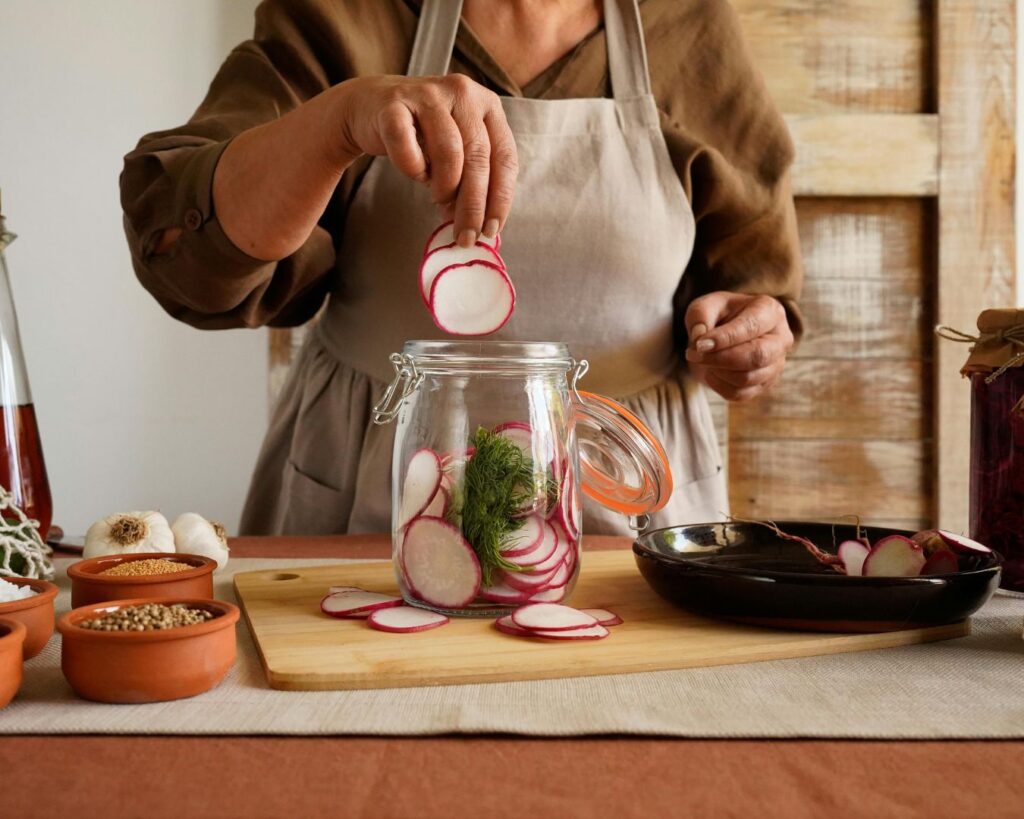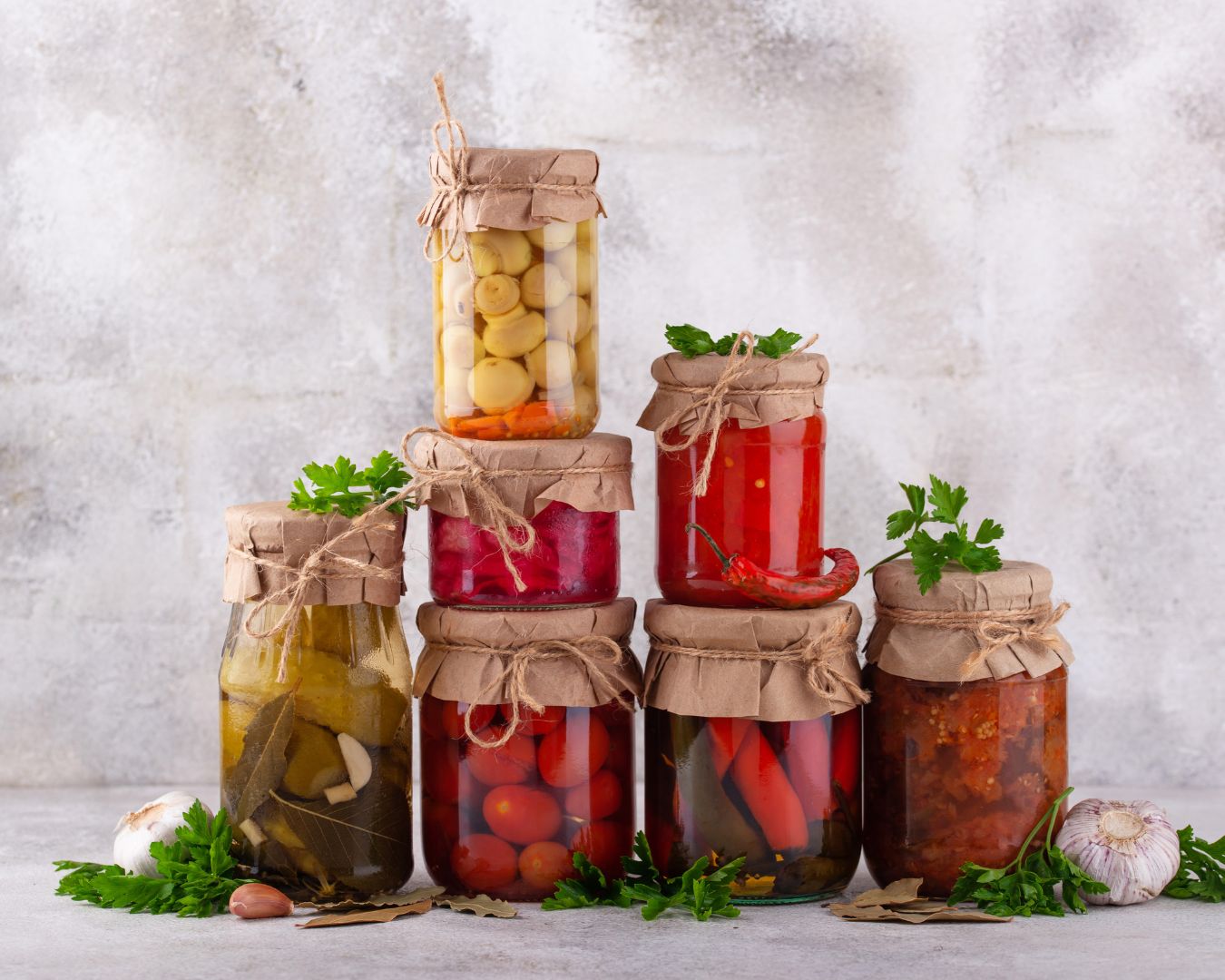The Role of Vinegar in Food Preservation: A Kitchen Staple for Longer-Lasting Foods
Vinegar has long been a trusted kitchen ingredient for food preservation, dating back centuries to when our ancestors used it to extend the shelf life of fruits, vegetables, and even meats. Today, vinegar remains one of the most effective and natural methods of preserving food while enhancing its flavor. This versatile liquid, which comes in various forms like apple cider, white, and wine vinegar, not only adds tangy zest to recipes but also plays a vital role in the preservation process. Let’s explore how vinegar works its magic and why it should be a staple in every kitchen.
How Vinegar Preserves Food
The secret to vinegar’s preserving power lies in its acidity. Vinegar typically contains 4-7% acetic acid, which lowers the pH level of foods, creating an environment that inhibits the growth of harmful bacteria, molds, and yeasts. When foods are submerged in vinegar, the acidic environment slows down the decomposition process, allowing the food to stay fresh for longer periods without refrigeration.
This process is commonly used in techniques like pickling, marinades, and fermenting, where vinegar not only preserves the food but also enhances its flavor.

Key Methods of Food Preservation with Vinegar
1. Pickling
Pickling is perhaps the most well-known method of food preservation using vinegar. In this process, fruits, vegetables, and even some proteins are submerged in a brine made from vinegar, water, salt, and sometimes sugar or spices. The acidity of the vinegar prevents the growth of harmful microorganisms, keeping the food safe to eat for weeks or even months.
Examples of popular pickled foods:
- Pickles (cucumbers)
- Pickled onions, carrots, and beets
- Pickled eggs
- Pickled jalapeños
In addition to preserving, pickling adds a tangy, tart flavor to foods, making them a delicious addition to salads, sandwiches, and charcuterie boards.
2. Canning with Vinegar
Vinegar is also used in home canning, particularly with acidic fruits and vegetables. When foods are canned with vinegar, they are sealed in airtight containers, ensuring long-term preservation. The vinegar in the canning liquid prevents bacteria from growing, especially the bacteria responsible for botulism, which can be dangerous in improperly canned foods.
Canning examples using vinegar:
- Pickled peaches
- Chutneys and relishes
- Tomato-based salsas
Using vinegar for canning is a natural, safe method to preserve seasonal produce so you can enjoy it year-round.
3. Marinades and Meat Preservation
Vinegar is often used in marinades for meats and fish, not only to tenderize but also to preserve them for a short period. The acidic properties of vinegar slow down the spoiling process and help maintain the freshness of proteins before cooking.
For example, meats that are marinated in vinegar-based sauces or dressings can be kept fresher longer. Vinegar also prevents bacterial growth on the surface of meats while adding flavor.
4. Fermentation
Fermentation is another method of food preservation that sometimes involves vinegar. Although the fermentation process primarily relies on natural bacteria, vinegar can be added to speed up the acidification of foods. This method is commonly used in making kombucha, a fermented tea, as well as in fermented vegetables like sauerkraut and kimchi.
Vinegar not only enhances the tanginess of these fermented products but also contributes to their longer shelf life and nutritional benefits, such as providing probiotics that promote gut health.

Benefits of Preserving Food with Vinegar
1. All-Natural and Chemical-Free
Vinegar is an all-natural preservative, free from artificial additives or chemicals. Unlike many store-bought preserved foods that use synthetic preservatives, vinegar offers a clean and safe way to keep foods fresh longer.
2. Longer Shelf Life
Foods preserved in vinegar can last significantly longer than those stored using other methods. For example, properly pickled vegetables can be stored in the pantry for several months, offering a way to enjoy seasonal produce year-round.
3. Enhanced Flavor
One of the added bonuses of preserving food with vinegar is the burst of flavor it imparts. Vinegar adds a tangy, sour note to foods, making them more interesting and complex. Pickled cucumbers, for instance, take on a sharp and refreshing bite, while pickled fruits develop a sweet and tangy complexity that complements both savory and sweet dishes.
4. Low-Cost and Accessible
Vinegar is one of the most affordable and widely available food preservation ingredients. It doesn’t require specialized equipment or expensive ingredients, making it accessible for home cooks who want to try their hand at pickling or preserving food at home.
5. Safe and Reliable
Vinegar has been trusted for centuries as a reliable method for preserving food safely. Its high acidity makes it a formidable opponent to harmful bacteria, ensuring that your preserved foods remain safe to eat for extended periods.
Best Types of Vinegar for Preservation
There are several types of vinegar that can be used for preserving food, each bringing a different flavor and acidity level. Here are a few of the best:
- White Vinegar: Known for its sharp, clean flavor, white vinegar is commonly used in pickling and canning. Its high acidity makes it effective for preserving a wide variety of foods.
- Apple Cider Vinegar: With a milder and slightly sweet flavor, apple cider vinegar works well in chutneys, marinades, and pickling fruits like apples or pears.
- Wine Vinegar (Red and White): These vinegars are often used in gourmet pickling recipes and bring a more complex flavor profile. They work especially well for preserving herbs, onions, and beets.
- Rice Vinegar: A staple in Asian cuisine, rice vinegar has a milder acidity and is often used in pickling vegetables like daikon, carrots, and cucumbers for dishes such as sushi and Korean banchan.
Vinegar is much more than a kitchen condiment; it’s a powerful and natural preservative that extends the life of your food while adding rich, tangy flavors. From pickling to canning, marinades to fermentation, vinegar offers numerous ways to preserve food and maintain its freshness. Whether you’re looking to enjoy summer’s harvest throughout the winter or enhance your favorite recipes with bold flavors, incorporating vinegar into your food preservation practices is an easy, cost-effective, and healthful choice.
So, next time you find yourself with an abundance of fresh produce, consider turning to vinegar as your go-to preservation tool. Your pantry and your taste buds will thank you!

